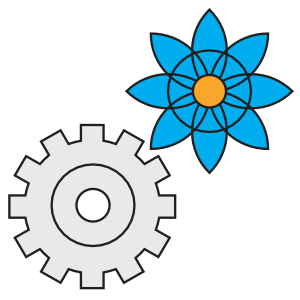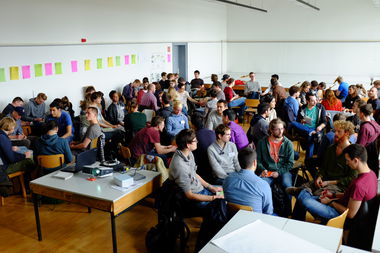Baukasten:Technology Assessment - digital: Unterschied zwischen den Versionen
(Die Seite wurde neu angelegt: „= Introductory Blue Engineering Session - Digital = {{Vorlage:Baukasten:Infobox:EN | Sprache = english | Indesign = false | Titel = Einstiegssitzung des Blu…“) |
|||
| Zeile 1: | Zeile 1: | ||
| − | = | + | = Technology Assessment - Digital = |
{{Vorlage:Baukasten:Infobox:EN | {{Vorlage:Baukasten:Infobox:EN | ||
| Zeile 18: | Zeile 18: | ||
| Kurzbeschreibung = | | Kurzbeschreibung = | ||
| − | + | Technology is omnipresent in our society. It is supposed to make our everyday life easier and solve our problems. But does the technology we use actually do that? Is it designed to meet our needs? And what other demands play a role in the development of technology? Does new technology solve problems or postpone them? Are there also solutions without technology? | |
| − | + | ||
| − | + | In this building block the participants work out 10 opposite pairs for an assessment of technology. These pairs are based on values that are most important to the participants. The opposite pairs illustrate where a technology ranks on the scale between convivial and non-convivial. For this, the participants first individually prepare opposite pairs using the TINS-D constellation. Working in groups, they exchange their results and decide on 10 pairs of opposites together. In the follow-up they use the pairs to evaluate a self-chosen technology. | |
| − | + | The term "convivial technology" means life-friendly technology and was originally coined by Ivan Illich. The concept seeks to highlight the social and ecological effects of technology. Its focus is placed on technology's ambivalence as technology has positive and negative effects which must be further analysed with technology assessment. | |
| Thema = | | Thema = | ||
| − | + | Assessing technology in a social context using TINS-D, convivial technology | |
| Typ = | | Typ = | ||
| Zeile 32: | Zeile 31: | ||
| Schlagwörter = | | Schlagwörter = | ||
| − | + | Technology and society, TINS-D,opposite pairs, conviviality model | |
| Kompetenzen = | | Kompetenzen = | ||
| − | + | Anticipation, Cooperation, Participation, Acting Morally, Acting Independently | |
| Lernziele = | | Lernziele = | ||
| Zeile 43: | Zeile 42: | ||
| Methoden = | | Methoden = | ||
| − | + | TINS-D, small group work | |
| Gruppengröße = | | Gruppengröße = | ||
| Zeile 49: | Zeile 48: | ||
| Dauer = | | Dauer = | ||
| − | 60 minutes | + | 60 minutes |
| Material = | | Material = | ||
| − | + | three texts, see references | |
| Qualität = | | Qualität = | ||
Version vom 26. Januar 2021, 19:59 Uhr
Technology Assessment - Digital
Technology is omnipresent in our society. It is supposed to make our everyday life easier and solve our problems. But does the technology we use actually do that? Is it designed to meet our needs? And what other demands play a role in the development of technology? Does new technology solve problems or postpone them? Are there also solutions without technology?
In this building block the participants work out 10 opposite pairs for an assessment of technology. These pairs are based on values that are most important to the participants. The opposite pairs illustrate where a technology ranks on the scale between convivial and non-convivial. For this, the participants first individually prepare opposite pairs using the TINS-D constellation. Working in groups, they exchange their results and decide on 10 pairs of opposites together. In the follow-up they use the pairs to evaluate a self-chosen technology.
The term "convivial technology" means life-friendly technology and was originally coined by Ivan Illich. The concept seeks to highlight the social and ecological effects of technology. Its focus is placed on technology's ambivalence as technology has positive and negative effects which must be further analysed with technology assessment.

